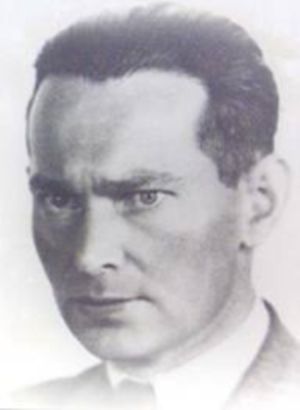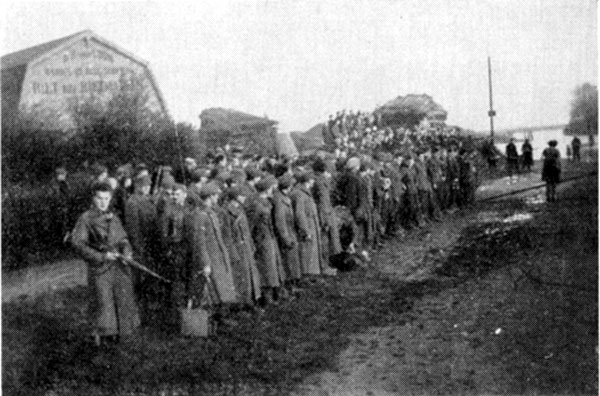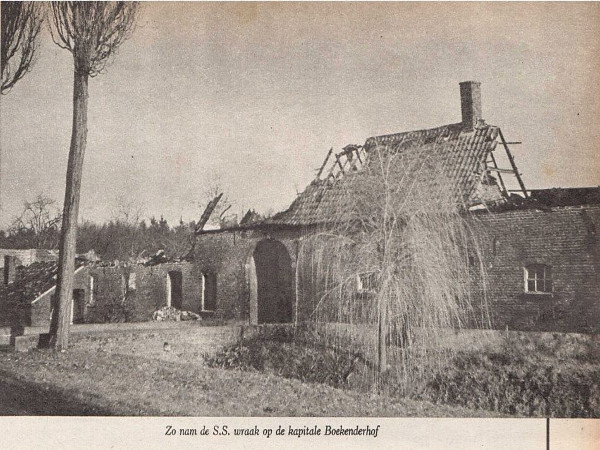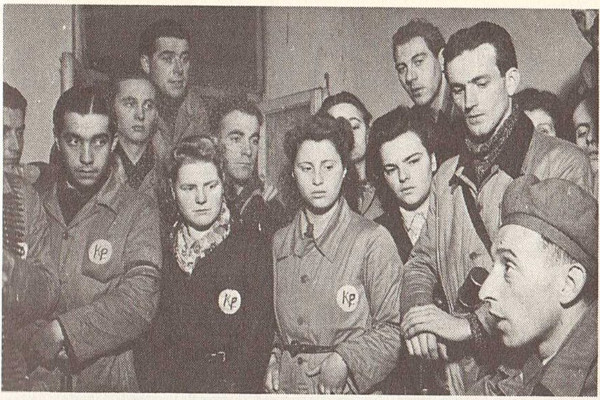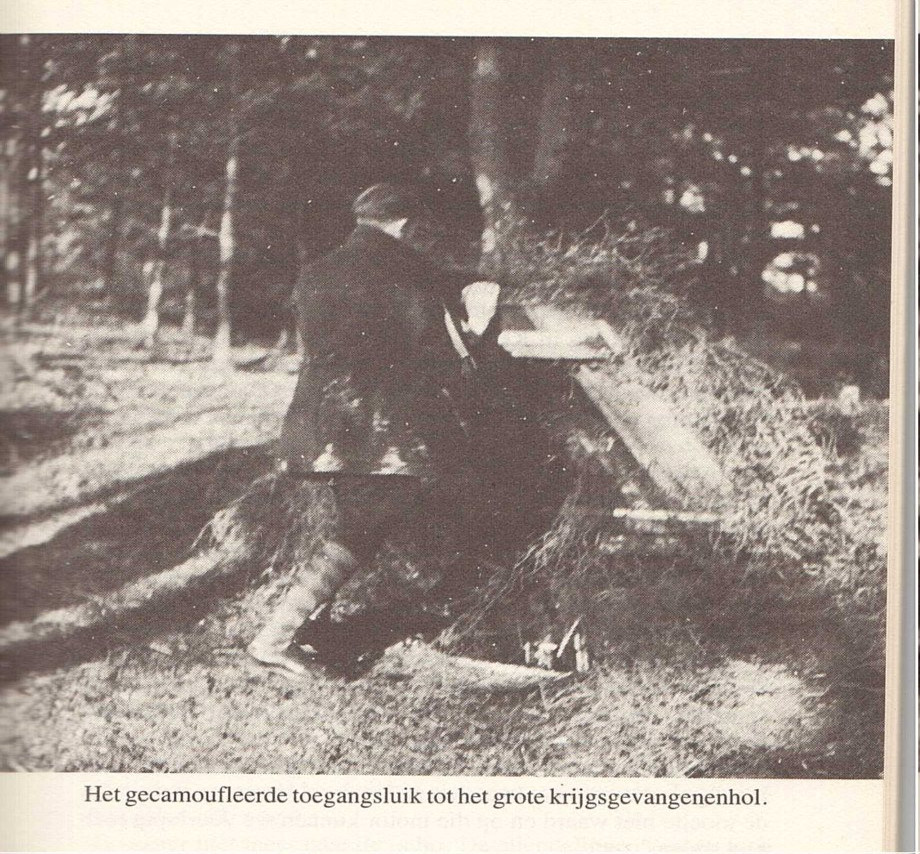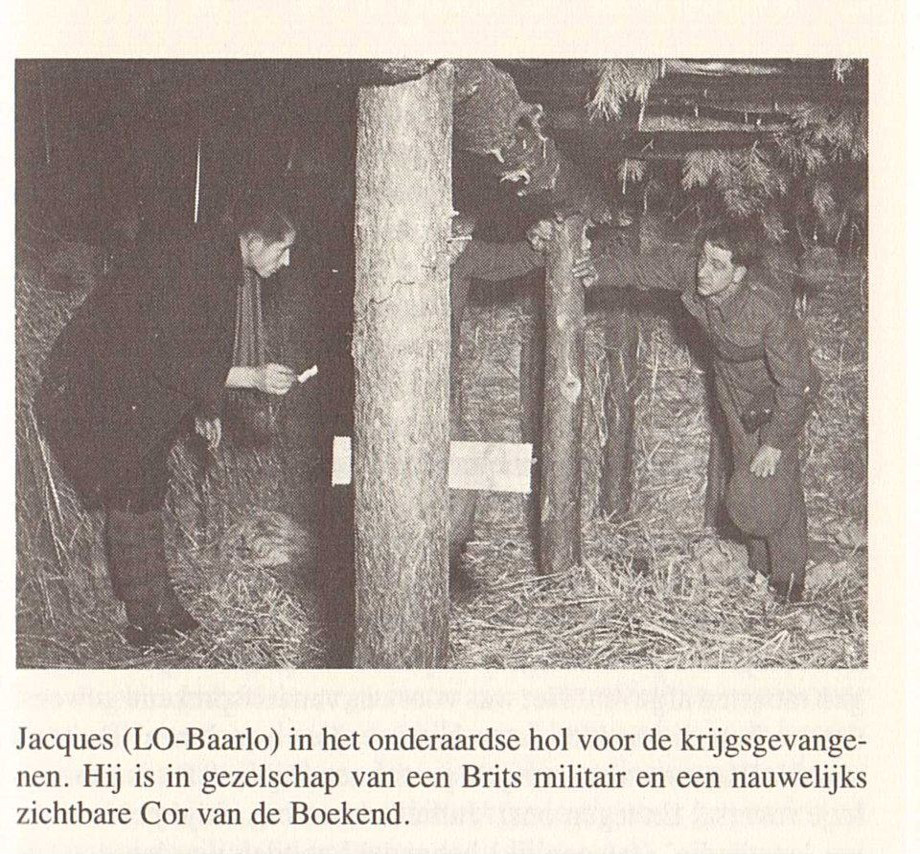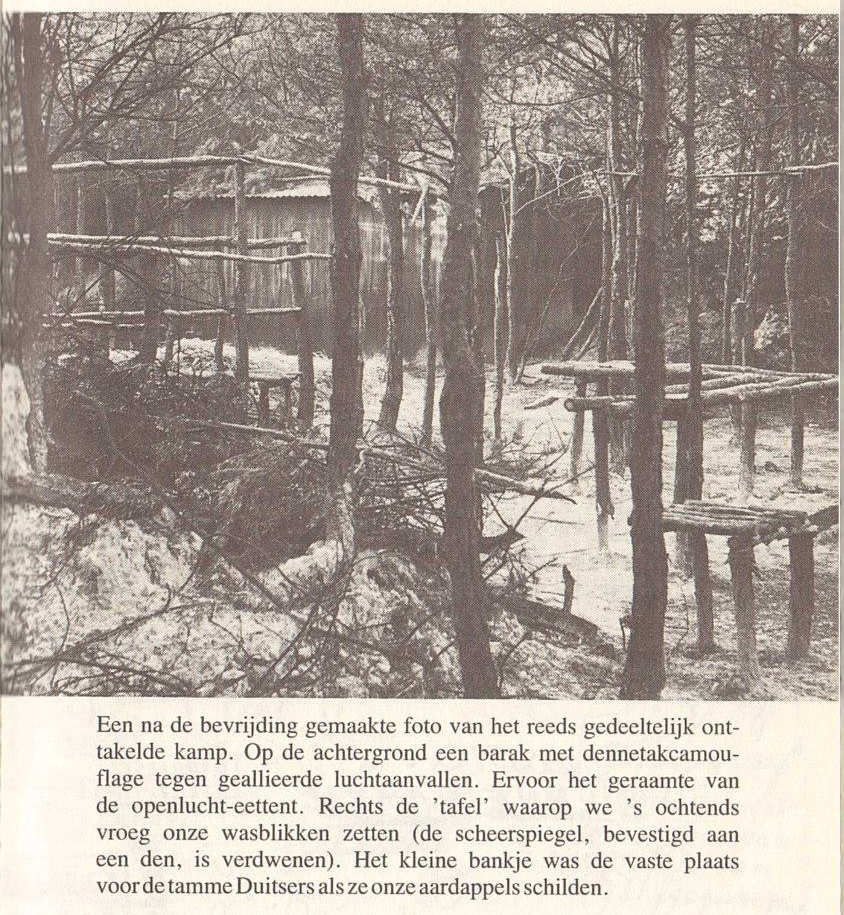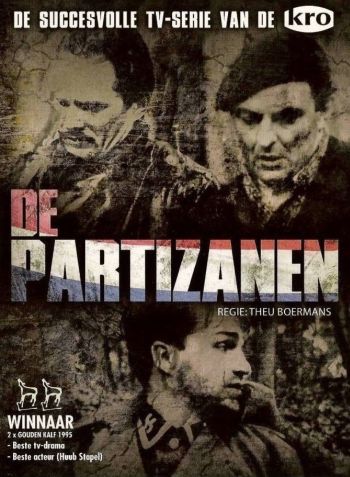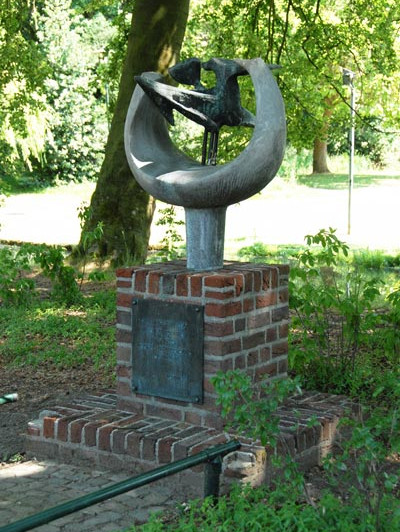Introduction
Nowadays, a discussion is going on whether or not the Dutch attitude towards their German occupiers during the Second World War had been lax. In this discussion, however, we must not forget how much courage it took to rebel, especially as part of the armed, or unarmed, resistance. There were high prices to pay for these acts of rebellion, and it has cost many Dutch people their lives.
A remarkable form of Dutch armed resistance during the Second World War was to imprison German soldiers, and then to hand them to the Allied powers at the liberation. This happened at several locations throughout the Netherlands. One of those locations was the Biesbosch, where retreating German soldiers were captured by KPs. They were kept in two large barges hidden in an area which was inaccessible to outsiders. On November 5 1944, 78 prisoners were handed over to the Allies at Drimmelen, which had been liberated by then.
Less famous, but no less spectacular, is the capture of German soldiers in Limburg by the KP Maas and Waal and the KP Limburg. This story is known as the Partisans of Baarlo, and it will be told in this article.
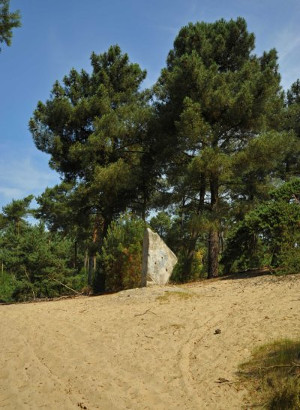
Memorial rock in the Kessel Hills forest, where the Partisan camp was located since 1944 Source: Lammert Melk
Definitielijst
- resistance
- Resistance against the enemy. Often also with armed resources.
Previous history
There were three major resistance groups in the Netherlands during WWII: the Landelijke Organisatie voor Hulp aan Onderduikers (LO; National Organisation for Aid to Hiders), which founded the Landelijke Knokploegen (LKP; National KPs) on August 14 1943; the Orde Dienst (OD; Public Order Service); and the Raad van Verzet (RVV, Council of Resistance. These organisations were different in their aims, backgrounds, and sizes. As a consequence, there was hardly any cooperation between them until September 1944.
The LKP were under the command of LO-members Hilbert van Dijk, Izaak van der Horst, Leendert Valstar, and Lieke Scheepstra. In the spring of 1944, Scheepstra (alias Bob) came in contact with another man of the resistance, Johannes Arnoldus van Bijnen (alias Frank). Together they deliberated the armed resistance, and Van Bijnen designed a plan of sabotage.
Van Bijnen was named Nationaal Sabotage Commandant (NSC) by the LKP leaders on August 25 1944. He had approximately 45 KPs under his command, spread across the country, differing in their compositions, and all insufficiently armed. His assignment was to organise and coordinate these teams.
On September 1 1944, there was a message from London: ‘François’. This was the long-awaited signal for NSC Frank to deploy his troops in an attempt to sabotage the Germans. The KPs were all too eager to comply, but they did not have the proper equipment, which was why Van Bijnen was flooded with requests for weapon drops.
Despite repeated requests to London by the Dutch resistance, hardly any weapons were supplied, least of all to the south of the Netherlands. As a result, the Limburg KP leader, Jaques Crasborn, gave his men the following order:
"As the Allied are drawing nearer, I have received orders from NSC Frank to protect several crucial Allied buildings, to thoroughly destroy railway junctions, and to act forcibly, with all LKPs, on D-Day. As the dropping of weapons by Allied planes in the south of the Netherlands has proven exceptionally difficult, if not impossible, I hereby order you to obtain weapons, ammunition, and vehicles by breaking into storage facilities; by raiding small groups of German soldiers; by any other method that will allow you to carry out your assignment responsibly."
It was this order that prompted the cooperation between KP Maas and Waal and KP Limburg.
Definitielijst
- D-Day
- The day of the long awaited invasion of western Europe in Normandy, France, 6 June 1944. After a long campaign of deception the allies attacked the coast of Normandy on five beaches to begin their march on Nazi Germany. Often explained as Decision Day, though this is entirely correct. The D stands for Day as generally used in military language. In this case it means an operation beginning on day D at hour H. Hence “Jour J“ in French.
- resistance
- Resistance against the enemy. Often also with armed resources.
Boekenderhof
The leader of the Limburg KP made an urgent call for backup in September 1944. This call was received by NSC Frank, who ordered the Maas and Waal KP to join the Maas and Waal KP for ‘a big assignment’ on September 6. In the course of Saturday afternoon, September 9, the two KPs met each other at Emma Street in Venlo, in a factory that produced religious statues. This factory was a resistance stronghold. It did not only have an enormous underground shelter, but also a formidable weapons arsenal.
A day later, the factory received a phone call saying that the bridge across the Maas would be blocked by the Germans. After short deliberation, the two KPs decided to cross the river to Baarlo on the left bank. They expected to have a better strategic position there.
The Baarlo resistance decided that the ancient farm ‘the Boekenderhof’ would serve as a headquarters for the KPs. Its position, south of the village, close to the dense Heldens forests, and far from all main roads, was advantageous. The farm was owned by Mr and Mrs Mertens.
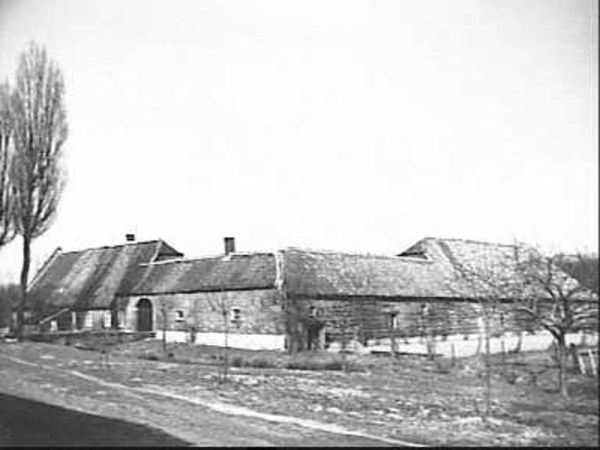
The Boekenderhof, an ancient Limburg farm, where the resistance found shelter. Source: Government Service for Cultural Heritage
The decision to leave Venlo proved to have been just in time. As a result of the Allied advance, the German Sicherheitsdienst (SD) moved their southern headquarters from Maastricht to Venlo on September 11. Other German troops, too, joined there, and on September 14 all male inhabitants of Venlo were drafted for digging.
Meanwhile, the KPs were enjoying themselves at the Boekenderhof. The September days were beautiful and they were keen to help with the apple harvest. Yet the Partisans of Baarlo, as they would be called after the war, were plagued by a sense of forced uselessness.
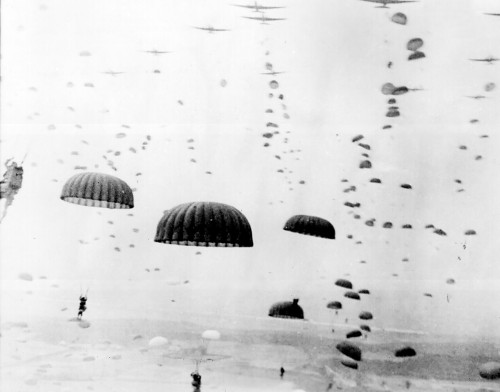
To increase the confusion among the Germans even further after large-scale Allied air drops from September 17 1944 (like the one in the picture), rebels embarked on sabotage missions in the hinterland. Source: Wikimedia
On September 14, around 6 pm, four Germans came driving up to the Boekenderhof. They were received warmly and were served a hot meal. Afterwards, they were lured outside, while the KP took care of their weaponry. As the soldiers were enjoying the garden, they were arrested by the men of the resistance. They surrendered peacefully and thus became the Partisans’ first POWs.
On September 17 1944, the sky over Arnhem and Nijmegen was filled with parachutes and gliders. The war’s largest airborne operation, codename Market Garden, had started. The Dutch resistance was called upon on the radio to support the Allied troops and confuse the German troops even more.
This was the KP’s cue to raid a German truck. After waiting a long time in the bushes at Kessel-Hout a truck drove by, which was stopped by machine gun fire. The driver and two passengers were taken prisoner. The truck’s load of weapons, ammunition, and money was confiscated. Meanwhile, in the same area, another member of the same KP had taken three other Germans prisoner.
The six new prisoners, as opposed to the previous four, were not kept at the Boekenderhof. They were housed, for the time being, in an underground shelter that the OD had arranged in the woods near Baarlo. From that moment on, the OD handled the prisoners, so that the KPs would have their hands free for riskier tasks.
On September 20, the KP decided against raiding another truck, because it would leave traces. Instead, they holed up in the woods until a group of Germans came by on bikes, whom they halted and took prisoner. The bikes and other supplies were quickly hidden in the bushes, and the eleven prisoners, along with their weapons and their money, were taken back to the base.
The KP decided that, after these raids, they would employ some deflective manoeuvres; if the Germans were to consult a map of all resistance-related incidents, they could only come to the conclusion that their base was at Baarlo. A part of the group therefore moved to farm ‘the Spik’, on the border of the municipalities of Haelen and Heythuizen, about 12,43 miles southwest of Baarlo. They would operate from this farm for several days. In the night of September 22, this group raided another German truck. One soldier was killed in the crossfire and several were wounded, but the KP members fled into the woods when the Germans came after them.
On September 25, the KP were woken at the crack of dawn when a large group of German soldiers approached the Spik. After a search that lasted several hours, which the men spent, mortified, in the hay loft, the soldiers left. The men quickly changed into civilian clothes and hastened to bury their guns, and then left to their respective safe houses. They had been just in time, because not half an hour later, the Germans returned to redo their previous search, this time including the hay loft. The next morning the Partisans discreetly returned to the Boekenderhof.
In the early morning of the 27th a German customs officer appeared at the farm for some apples. He was immediately overpowered by a resistance fighter and taken into another room for interrogation. A few moments later, however, two more German officers entered. They had had a gut feeling that something was amiss and kept a female courier at gunpoint. One of the soldiers opened the door of the impromptu interrogation room, at which the KP member immediately opened fire, and panic ensued. The gunfire alerted the other KP members, who shot the customs officer, who had been trying to use the chaos to escape.
Meanwhile, another German sergeant had entered. These three German soldiers tried to escape, using the female courier as a human shield, while the KP were ready to fire. The brave woman cried for them to just shoot and fell to the floor, which saved her life. Two Germans were killed, but the third got away. The whole farm was in an uproar. In all haste every incriminating document was disposed of, and Mr and Mrs Mertens were taken to safety. Carrying their weapons and other supplies the resistance moved into the woods around Baarlo. Again, they had been just in time, as shortly afterwards a large group of the SS burned down the farm.
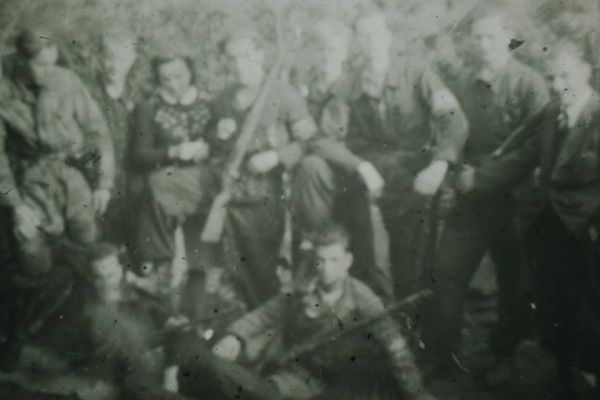
Post-war picture of members of the KP (the Woodland Partisans) Source: Historical Society The Borcht Baarlo
Definitielijst
- machine gun
- Machine gun, an automatic heavy quick firearm.
- raid
- Fast military raid in enemy territory
- resistance
- Resistance against the enemy. Often also with armed resources.
- Sicherheitsdienst (SD)
- The national socialistic intelligence and counterespionage service of the SS.
The Prisoner of War camp
At this point, the KP had lost their headquarters, and because of their twenty prisoners of war, they were unable to go back to their normal lives. Fortunately, there were no further retaliations, and the Germans did not search the rest of the woods for the Partisans. The resistance, too, kept a low profile, but did concern themselves with rebuilding an older safe house in the woods near Helden, approximately 9,32 miles southwest of Venlo. This was to become a camp where POWs, OD security, and KPs could be housed.
Every now and then, new prisoners would arrive. These were usually German soldiers who had been raiding nearby farms. Two German soldiers, however, defected and joined the KP. Everywhere these two went, they asked to join the Woodland Partisans. The KP were curious about these men and asked local farms to take them in as hiders, which happened two days later. They were interrogated, but maintained that they were simply two soldiers tired of the war. After the initial suspicion had worn off, they were sent to the camp near Helden.
On October 1, these two prisoners were revealed to be Waffen-SS. Their real intention had been to roll up the entire camp. One of the prisoners came to warn the resistance that these infiltrators were planning a prison break. After a short interrogation, they confessed.
The KP decided to execute the two SS-men. This was no easy decision, but the risk of their escaping was too great. If that had happened, they would have had to abandon camp to evade arrest and death, but it would also have meant severe retaliations towards the local civilians. In the early hours of October 2, the men were executed and buried in an undisclosed location in the woods.
In the days that followed, the Germans became increasingly industrious in Limburg. This gave the Partisans the idea to dig an enormous underground lair that could house 70 men. They started digging on the 20th, but the whole thing collapsed soon; the ground was too soft, and they would have to use wooden beams to keep everything intact.
A fresh attempt was made on the 27th. Not far from camp, a section of the woods had been cleared, and they decided to use that wood as support beams. Every Partisan who went to collect wood took two or three Germans with him. At the third round of transport, an alarm sounded. One of the German soldiers had asked to relieve himself in the bushes and had fled.
The entire camp was in an uproar. Groups of men were sent out to intercept the lost prisoner, but to no avail. Others started to destroy any incriminating evidence in the camp. Within an hour, a colonnade of thirty German prisoners, under the watchful eye of the heavily-armed Partisans, abandoned camp.
They rushed to the road between Kessel and Helden, as they believed they would be safe on the other side of that road. Once there, they concocted a plan: two Partisans would cross the road first, and then every man would cross with ‘his’ prisoners and direct the next Partisan. Despite a few close shaves with passing Germans, they all reached the other side safely.
Definitielijst
- resistance
- Resistance against the enemy. Often also with armed resources.
- Waffen-SS
- Name of Military section of the SS.
Last weeks before Liberation Day and aftermath
Oddly enough, the Germans never visited the old camp. Perhaps they had thought the escaped prisoner a deserter. This allowed other Partisans to continue digging the underground camp. The Woodland Partisans, meanwhile, were holed up at the drainage channel in Neer, and their situation was getting increasingly dire as their food supplies ran out. Needless to say, the men were elated when a courier woman came to tell them that the underground camp was ready. They could hardly believe it, but that night they started their return to the woods. After a long, adventurous journey of over seven hours, they were bitterly disappointed; the message about the finished lair had been based on a misunderstanding.
So the group returned to the drainage channel in Neer. This time, they took refuge in a sheep cage. After a few days they moved to large pens at a farm near Neer. Meanwhile, the resistance and their prisoners were feeling worse and worse. There was even an outbreak of typhoid among the Germans. The food supply kept dwindling and the expected advance of the Allied powers did not materialize. Some of the Partisans even voted to execute the prisoners to ‘get rid of’ their problem, but luckily, this was prevented.
The prisoners were transferred to a OD Baarlo-camp (also underground) around November 9, where the OD could watch over them. The KP retreated to the old camp in the woods. In the evening of the 18th two Partisans reached the Allied line. After a long interrogation, the English believed their remarkable story.
In the morning of November 19 a heavily-armed English patrol reached the underground camp. The commander of the 154th Infantry Brigade received the prisoners, and praised the Partisans, as some of them volunteered to act as guides through the woods, which they knew like the back of their hands by now. Other members of the resistance extracted wounded English soldiers from the frontline. Most members joined the shock troops and fought openly until the capitulation.
One of the Partisans, Will Hofwijk, recorded this remarkable story in ‘De partizanen, de 66 dagen van Baarlo’(1954). Jan Derikx wrote another book in 1980; ‘De bospartizanen van Baarlo''. In 1994, the Dutch KRO (TV Station) broadcast a series about them, directed by Theu Boermans and starring Huub Stapel. The KRO also dedicated three shows to the Limburg resistance during World War II, called ‘'SPOREN - het verborgen front’. These episodes are available at the Nederlands Instituut voor Beeld en Geluid (Dutch Institution for Video and Audio) in Hilversum.
Nowadays, few traces remain of this resistance group. There are, however, two monuments erected in their honour; a memorial stone in the woods of the Kessel Hills, inscribed ‘KP Camp – 1944’; and in the Kempke Park in Baarlo there is a monument inscribed ‘Offered to the citizens of Baarlo, after 25 years, by the Woodland Partisans’.
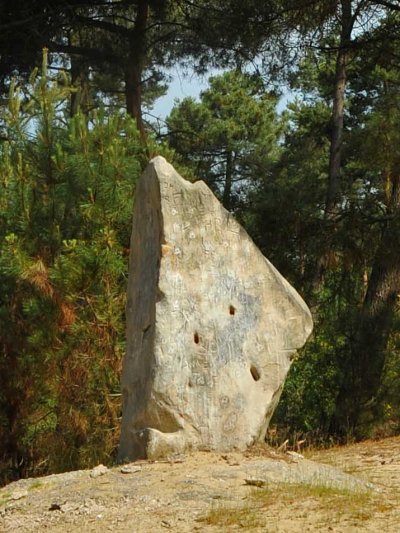
Memorial stone on the location of the former Partisan camp in the woods of the Kessel Hills. Source: Lammert Melk
Definitielijst
- Brigade
- Consisted mostly of two or more regiments. Could operate independently or as part of a division. Sometimes they were part of a corps instead of a division. In theory a brigade consisted of 5,000 to 7,000 men.
- capitulation
- Agreement between fighting parties concerning the surrender of a country or an army.
- Infantry
- Foot soldiers of a given army.
- resistance
- Resistance against the enemy. Often also with armed resources.
Information
- Article by:
- David Izelaar
- Translated by:
- Nadia Guntlisbergen
- Published on:
- 09-05-2019
- Feedback?
- Send it!
